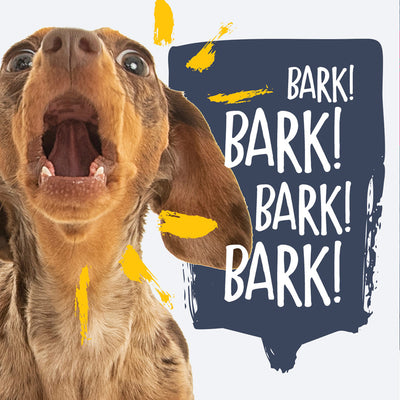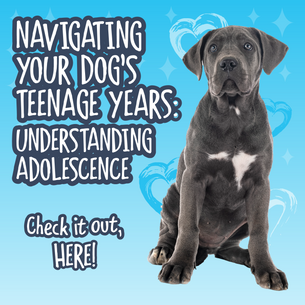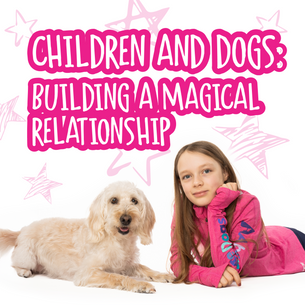Why is my Dog Behaving like a Crazy Thing?
Is your dog barking and lunging on your walk? Pardon us for asking, but have you hoovered recently?
We don’t ask to be nosey about your household chores, it’s just that this could be the underlying reason why your walk turns into a nightmare, and that fact is that the outcome of your walk doesn’t relate to just what happens on the walk. Your dog’s worry of the vacuum cleaner, excitement of guests and even if they barked at the postman all play a role too.
Dogs have stress thresholds. We’ve all had that experience of bursting into tears over something silly after a bad day at work. It is exactly the same for your dog. Your dog’s bucket is full to overflowing and barking and lunging is just one way that they might express it.
Introducing: The Bucket

Your dog’s bucket represents your dog’s brain. Your dog is constantly exposed to things that can pour into the bucket - these things could be exciting (“positive stress”) or worrying, even (“negative stress”). And when your dog’s bucket is full, they can’t think straight. Everything spills out and then we have problems.
What Does a Full Bucket Look Like?
- Barking/more vocal and lunging
- Struggling to settle in the house
- Pulling on the lead
- Jumping up
- Distracted/struggling to focus on owner
- Irritability (with you, your children, other dogs/pets in the household)
- Hiding away/avoidance
"The thing is, these are not behaviour “problems”, they are dog behaviour. And they are a good indictor that your dog’s bucket is full."
This is NOT a Training Issue
If your dog knows how to behave in these situations normally, the problem isn’t that your dog hasn’t been taught a certain skill: the problem is that your dog’s bucket is full. And in this particular instance, any attempt to resolve the problem through training is going to be doomed to failure because the underlying issue persists. Addressing the symptom, rather than the underlying problem is like trying to empty a lake using a fork
What Fills the Bucket?
There are three common stressors that contribute to filling your dog’s bucket:
1. Stress: stress is anything that your dog decides it is - things they are excited by or worried by. Common examples include cars, horses, other dogs, walking on lead, noises caused by household appliances; positive stress such as a day spent at a fun but tiring dog sport event or an afternoon chasing a ball at the park; novelty - new things in the environment/dog’s life.
2. Pain: your dog may be suffering pain from a known or an unknown condition. Injuries, health conditions and illnesses can cause pain before more obvious symptoms become apparent.
3. Itch: allergies, parasites, skin conditions, food intolerances, etc. can make itch a real problem all year round.
One or more of these stressors can be active at once, so you might be dealing with one issue or a combination - creating a very full bucket.

What does this mean?
It means that what your dog did this morning, yesterday or even last week influences:
- Their behaviour today,
- How itchy their skin is from their food allergy right now,
- And even how much that small amount of arthritis in their hip (that hasn’t even been diagnosed yet) is impacting their fun on their walk.
But equally, it means that your dog’s uncontrolled itchiness is massively impacting the choices they are making and, again, possibly even the pain they are feeling.
Further to this interaction between stress-pain-itch and the impacts this has on quality of life, exposure to a constantly full bucket puts pressure on your dog’s physical systems which over time impacts quantity of life.
Left alone, we have found this bucket can take 72 hours+ to empty by itself (and that’s without other things happening in the meantime).
So - the big question - how can we speed up the process?
Here are five methods you can use to empty your dog’s bucket, improving their behaviour, health and even their lifespan:
1. Give your dog a break
If your dog finds walks stressful, give them a break. If the world is a scary place to your dog, or if they are in pain, a walk might not be the best thing for them. Playing training games will get them moving, stimulate them mentally and get them having fun, while avoiding the stressors that pay into their bucket. Equally, playing the right games with your dog at home could actually transform their struggles on walks (we call these games “Leash Off Game On” games!) and turn a bucket-filling experience to actually the bucket-emptying experience it is meant to be (for both you and your dog!)
2. Boundary games
Your dog has to navigate the human world without a rule book, and knowing what to do in everyday interactions can reduce your dog’s stress level massively. Your dog seeing the FUN in controlling themselves and making great choices is all part of the awesomeness of being a gamechanger - we call the step-by-step of games that teach your dog real-life self-control Boundary Games! Check out our Boundary Games DVD here for games - these literally teach your dog to greet your guests calmly, walk nicely on a lead, stay close on walks and not chase that squirrel, all from the same fun games !3. Work with your Vet as a Team
Talk to your vet and work together. They will be very glad to have an owner who is taking an active part in helping their dog!
We made a video for you to make that conversation easier - How to make your dog better behaved, increase their lifespan, and make their health struggles easier to manage without the need for medication (find it here) - that you can share to everyone you need to get the message out there and to your vet for background information. Don’t be afraid to chat on this important interaction - it’s a gamechanger for your life and your dog’s life!
4. Inspire OPTIMISM
Pessimistic dogs are worriers, and worry pays into the bucket massively. But the good news is that you can change your dog’s outlook. Check out the Optimism Rocks book here to find out how and grab a free copy. An optimistic dog is so much better equipped to deal mentally with whatever life throws at them!
5. Be your Dog’s Observer Watch for signs of your dog’s bucket being fuller than normal. The key is to become your dog’s expert observer. Know what works for your dog. Know what your dog’s positive and negative stressors are. Notice what has an impact on them. Notice what is normal for them physically, psychologically, emotionally and behaviourally, and recognise and identify any changes in the norm. Take action on any changes by giving your dog a few days of rest and relaxation.
The Ultimate Investment
Keeping an eye on your dog’s bucket has massive benefits. Your dog will be happier and better able to participate in and enjoy daily life. If they are relaxed, they will feel pain less/itch less. That in turn keeps their bucket nice and empty, and that allows them to go about their business happily. It is a happy circle.
So pay attention to your dog’s bucket. Keep it as empty as possible. In doing so, you’ll help your dog to live a long life full of fun and happiness. And you can’t get better than that!




